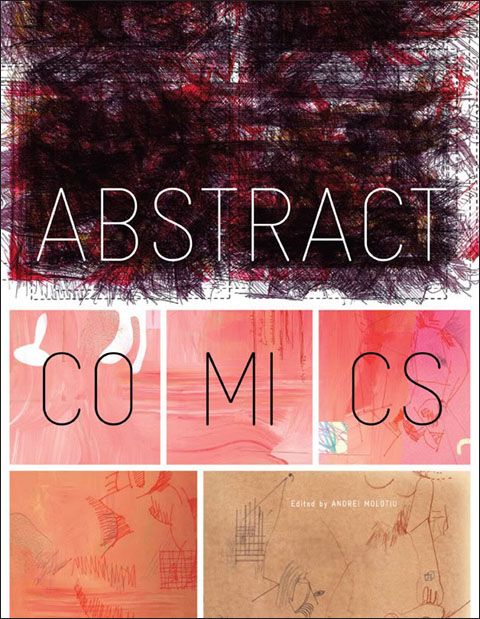Edited by Andrei Molotiu
Fantagraphics Books, 232 pages, $39.99.
Scott McCloud famously posited (among other things) in Understanding Comics that it was the sequential nature of the medium -- the fact that images were placed one next to the other -- that gave them their uniqueness and strength. As a reader, one couldn't help but create a connection or story of some sort between two images placed together, even if none existed. Comics, in other words, is an inherently narrative medium.
Or is it? That's the question -- one among several -- that Abstract Comics, a new anthology edited by Andrei Molotiu, asks. If you're the sort of person, like me, who gets off on these sort of labyrinthine, subjective, academic questions, then you're sure to like this book (in fact, chances are you've already bought a copy). But even if the very mention of the word "abstract" makes you poke your fingers in your ears and go "La la la la", I'd strongly recommend the book, as it contains a number of strikingly beautiful images and sequences.
The book opens with a lengthy introduction by Molotiu, wherein he expounds upon his ideas behind putting together such a book and even offers a pseudo-history of the genre (if we can call it that) listing a number of notable painters like de Kooning and Johns, who experimented with using sequential images in their paintings.
Molotiu then opens the book with an early work by Robert Crumb, "Ultra Super Modernistic Comics." Unfortunately, it makes for an awkward entry point, as the comic barely meets any definition of "abstract" I know since it mainly consists of representational images. If anything it just underscores how unexplored this realm has been up till now. More effective is the sequence immediately after by Victor Moscoso, of a series of differently stacked objects, drawn in a rushed, rough manner.
But such quibbles fade the further I progressed in the book. And, indeed, McCloud's theory proved to be true, at least for me, as I found myself inadvertently attempting to create some sort of narrative or connection between the different series of images. even when none seemingly existed.
Of course, some of the contributions do in fact have a narrative, even if it's something as basic as "object changes shape" or "objects change color" or "big panels turn into small panels."Some sequences, like Lewis Trondheim's or Ibn Al Rabin's, even make a stab at humor, as shapes devour each other, attempt conversation or otherwise attempt to engage each other. Other artists come by narrative in a more oblique fashion, by adding an element, like color, from one panel to the next, as Mark Gonyea does, or taking the same basic shape and inking it in different ways, as John Hnkiewicz does.
Others opt to pare down formerly representational images to their c0re abstract forms. There were a number of contributions, like Mark Badger's, for instance that took two pages from Master of Kung Fu down to their most basic compositional elements. I also appreciated Derik Badman's choice to redraw only the backgrounds from a Jesse Marsh Tarzan comic, creating something that suggests an environment being explored, but only just.
I found my favorite sequences were those that used color or line to emphasize the mood or composition of the piece. I loved, for instance, Andy Bleck's chubby, colorful, almost-melting shapes and found Henrik Rehr's Storms to be breathtaking in it's use of thin, short, compact lines to suggest rapid yet elegant movement.
I could go on. There was much here I liked and very little that made me want to leap up from my chair, point an accusatory finger at the book and declare "That's not comics!" as loudly as possible. For years, comics (at least American ones) have doggedly refused for one reason or another, to consider other schools of art and beyond mere representation. It's only now we see artists attempting to branch out and try to push at the edge's of the medium's definition. As such I found Abstract Comics to be a revealing, thought-provoking and genuinely lovely book that I'll be sure to be rereading in the months to come.


